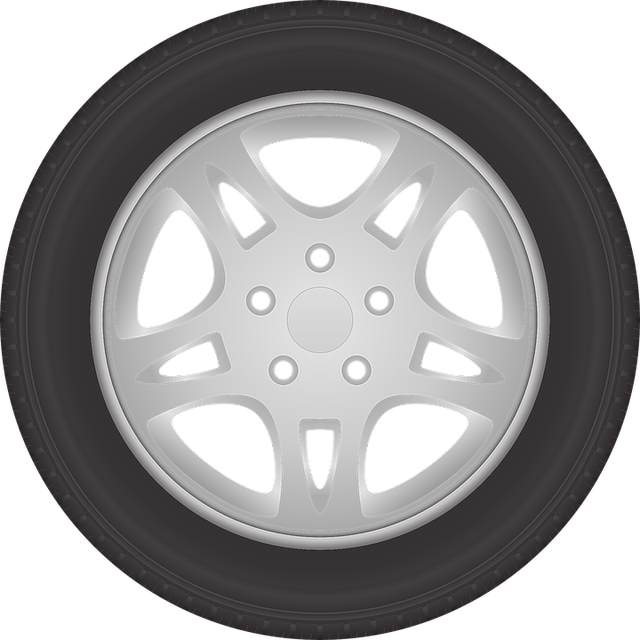Looking to register your car in California? This comprehensive guide walks you through the entire process, from understanding key requirements to securing your registration plate. We’ll break down essential steps like gathering necessary documents, performing a DMV VIN verification, and completing the application with associated fees. By following these straightforward instructions, you’ll be cruising down the open road in no time while adhering to California’s strict regulations.
- Understand California Car Registration Requirements
- Gather Necessary Documents for DMV Visit
- Perform Vehicle Identification Number (VIN) Verification
- Complete Application and Pay Fees at DMV
- Receive Registration Plate and Documentation
Understand California Car Registration Requirements

Before registering your car in California, it’s crucial to understand the state’s specific requirements. The California Department of Motor Vehicles (DMV) mandates several steps for vehicle registration, including a thorough vin inspection. This involves verifying the Vehicle Identification Number (VIN) data, which is essential for ensuring the car’s authenticity and history. During the process, you’ll need to present valid documents such as proof of ownership and insurance.
One convenient option available in California is mobile vin verification, allowing you to complete this crucial step without visiting a DMV office. This service enables you to have a professional perform a vin inspection right at your location, saving you time and effort. By adhering to these requirements and utilizing available resources like mobile vin inspection, the car registration process becomes more accessible and efficient for California residents.
Gather Necessary Documents for DMV Visit

Before visiting the California DMV to register your car, make sure you have all the required documents ready. This process is designed to verify your vehicle’s identity and ensure it meets safety standards. You’ll need your vehicle’s Registration Application (form DVF 140), which can be obtained online or from a DMV field office. Additionally, bring along proof of insurance, your driver’s license, and the title or lienholder information for the car.
One crucial step is to complete a DMV Vin verification, where you’ll need to provide the vehicle identification number (VIN) for your car. This can be done easily with a mobile vin verifier, making the process convenient and efficient. Some offices might also accept a mobile vin inspection as proof of ownership and vehicle details. Always check with your local DMV for specific requirements to ensure a smooth registration experience.
Perform Vehicle Identification Number (VIN) Verification

Before you can register your car in California, it’s crucial to perform a Vehicle Identification Number (VIN) verification. This step is essential as it ensures that the vehicle you’re registering matches the details on record and helps prevent fraud. The process involves checking the VIN against the data held by the Department of Motor Vehicles (DMV) to ensure its accuracy.
A mobile VIN inspection or verification can simplify this process, allowing you to complete it efficiently. This service enables you to have a professional conduct the check using specialized equipment, ensuring a precise and reliable outcome. By undergoing this verification, you’ll be one step closer to legally registering your vehicle in California, making the entire process smoother and faster.
Complete Application and Pay Fees at DMV

To register your car in California, the first step is to complete the necessary application at the Department of Motor Vehicles (DMV) office or online. You’ll need to provide key information about the vehicle, including its make, model, year, and current mileage. Additionally, a valid driver’s license, proof of insurance, and any applicable fees are required. Once your application is ready, you can proceed with the next crucial step: DMV VIN verification.
This process involves verifying the Vehicle Identification Number (VIN) to ensure it matches the information on record. You might consider using a mobile VIN verifier or conducting a vin inspection for added convenience. After successfully completing this stage, along with paying the requisite fees, your car registration will be finalized, enabling you to legally operate your vehicle on California’s roads.
Receive Registration Plate and Documentation

After completing the registration process with the California DMV, you’ll receive your registration plate and essential documentation. This includes a Certificate of Registration and a Vehicle Identification Number (VIN) verification report. The VIN is a unique identifier for your car, which plays a crucial role in the registration process, especially during the dmv vin verification step.
Ensure that all details on these documents match your vehicle’s information, including the make, model, year, and VIN. If you’ve opted for a mobile vin inspection or mobile vin verification service, this step might be even easier as they can provide immediate validation and streamline the process further.
Registering a car in California involves understanding state requirements, gathering essential documents, and completing a straightforward process at the Department of Motor Vehicles (DMV). After performing a Vehicle Identification Number (VIN) verification, which ensures vehicle authenticity, you can fill out an application and pay the necessary fees. Upon approval, you’ll receive your registration plate and official documentation, marking the successful completion of the car registration process in California. Remember to keep your documents up-to-date for smooth driving experiences.
